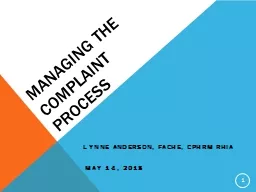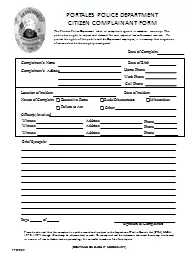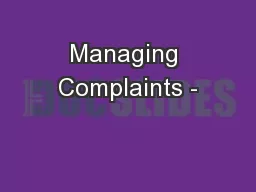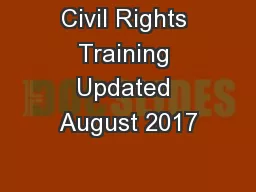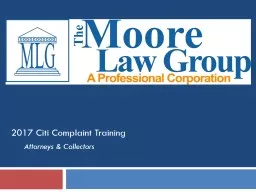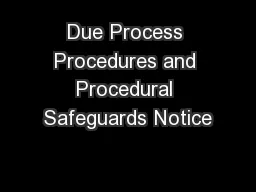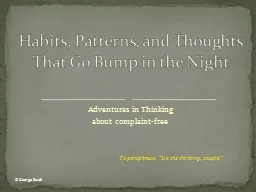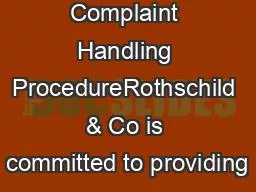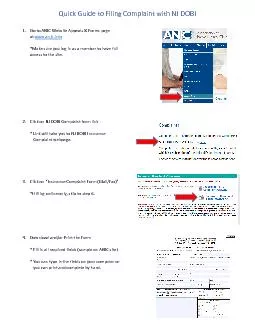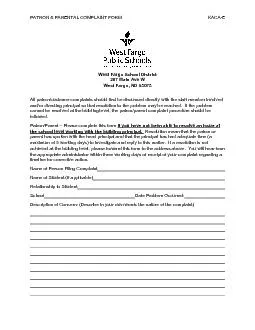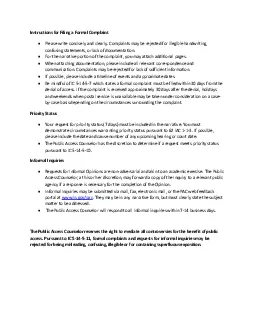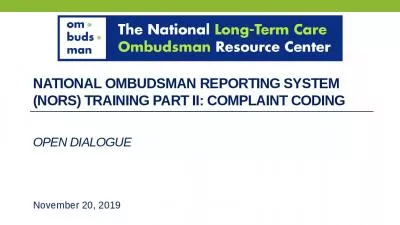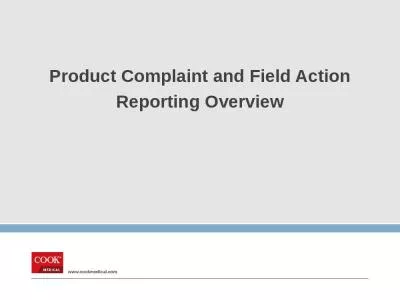PPT-Managing the complaint process
Author : tatiana-dople | Published Date : 2016-03-17
Lynne Anderson FACHE cphrm rhia May 14 2015 1 2 introduction We have all had to deal with some type of complaint patient family staff member Risk management
Presentation Embed Code
Download Presentation
Download Presentation The PPT/PDF document "Managing the complaint process" is the property of its rightful owner. Permission is granted to download and print the materials on this website for personal, non-commercial use only, and to display it on your personal computer provided you do not modify the materials and that you retain all copyright notices contained in the materials. By downloading content from our website, you accept the terms of this agreement.
Managing the complaint process: Transcript
Download Rules Of Document
"Managing the complaint process"The content belongs to its owner. You may download and print it for personal use, without modification, and keep all copyright notices. By downloading, you agree to these terms.
Related Documents

